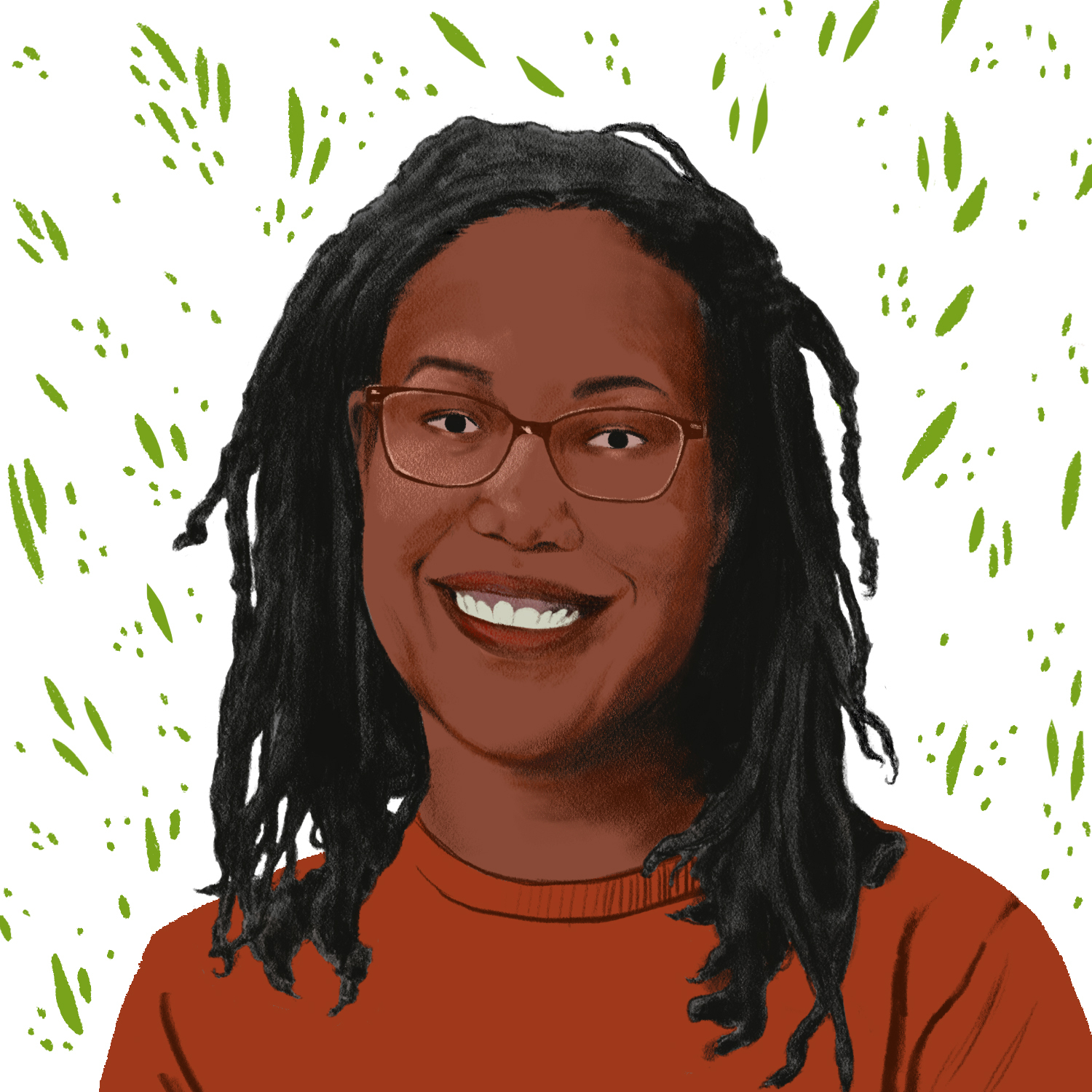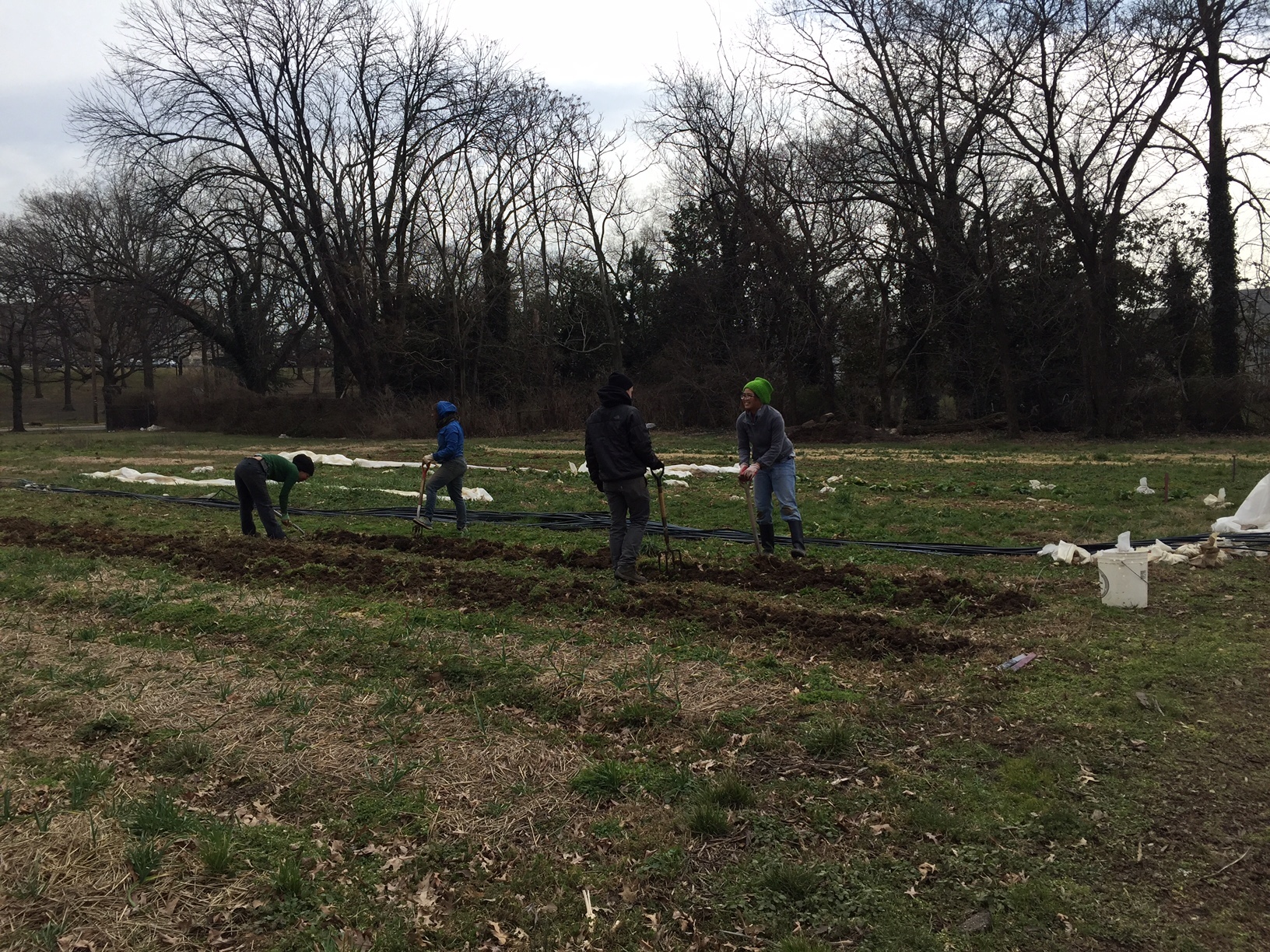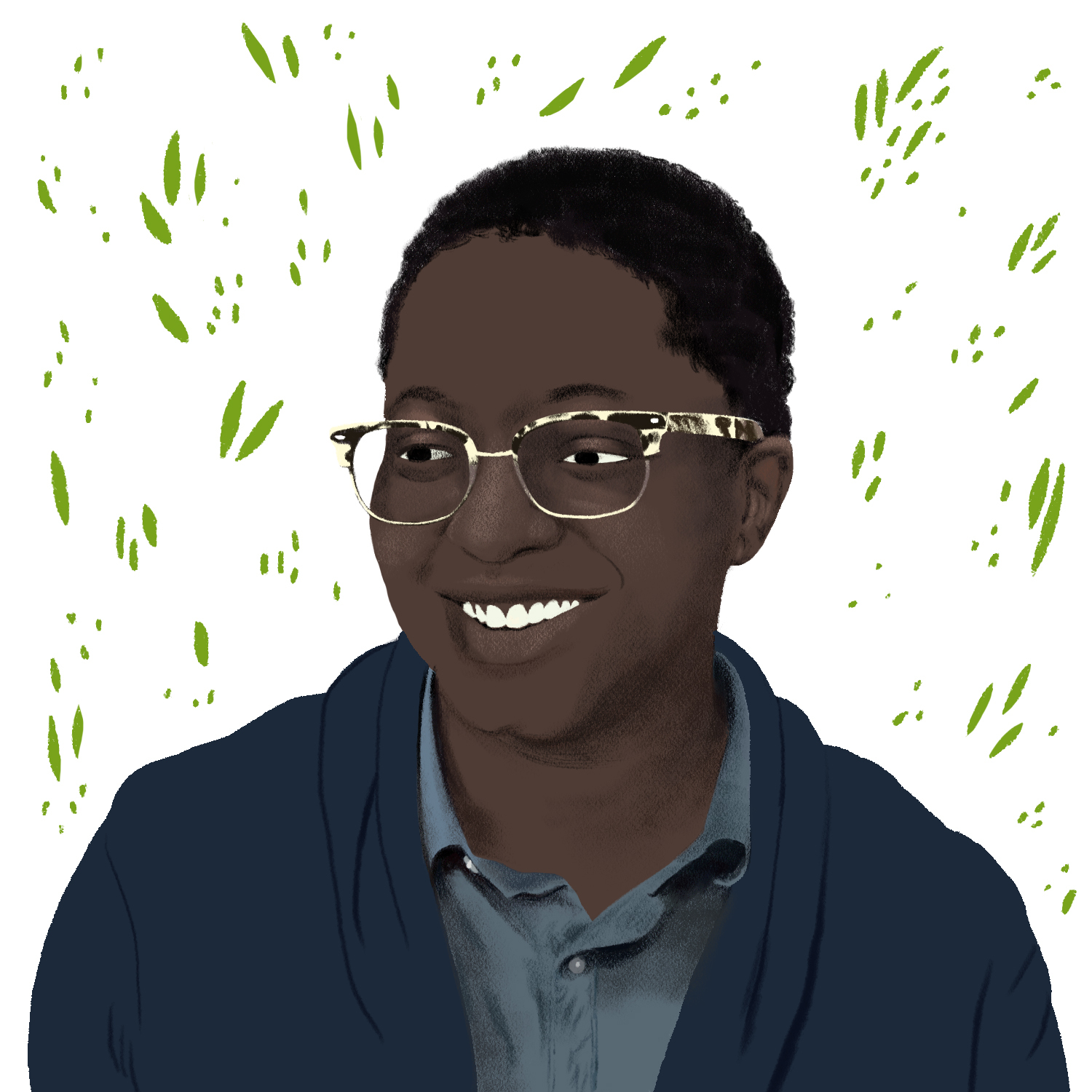From backyard farms to community plots, fire escape gardens to rooftop vegetable patches, cities across the nation are getting greener every year. The push is largely being spearheaded by young farmers: the 2012 Census of Agriculture reported that over 100,000 new farms are owned by people aged 25-34, and many of those have sprung up in major cities like New York and Washington, D.C.
The work of building more green space in cities is more relevant than ever, but farming faces many of the same race-based issues as the rest of the workforce: namely, that even this green landscape is overwhelmingly white. Though women are represented in farming at higher rates than in other industries —they make up 43% of the agricultural labor force in developing countries, and 14% of farm operators in in America in 2012, according to the U.N.’s Food and Agriculture Organization —farms owned and run by low-income individuals and people of color are few and far between.
The numbers are particularly stark for African Americans: In 2012, they represented just fewer than 2 percent of the total farming population. That’s a pretty dismal statistic, one that made us stop and ask a seemingly straightforward question: where are all the black farmers?
The answer is deeply rooted in the systemic and institutionalized racism in the United States. Post-slavery, many freed black Americans were sharecroppers and farmers; in Mississippi in the late 19 th century, for example, black farmers made up two-thirds of all farmers in the Delta. By 1910, however, most had lost their land and moved to tenant farming under white landowners. Why? In part, because black farmers were consistently denied the loans they needed to buy farmland by the United States Department of Agriculture. Many recalled instances of having their loan applications torn up, spat on, and thrown away by USDA officials. Others had to return repeatedly to the their USDA offices to fill out paperwork while they watched white farmers walk out with loans in the hundreds of thousands of dollars.
This discrimination in the form of denied loans, the government’s seizing of private property under eminent domain, and other institutionalized racism ultimately led thousands of black farmers to file a class action suit against the United States Department of Agriculture (USDA), which was settled in 1999. Pigford v. Glickman is the most tangible and significant legal proof of the racial discrimination faced by African Americans: over $1 billion in damages were awarded to over 13,000 farmers who proved they had been unfairly discriminated against by the USDA’s allocation of farm loans and assistance between 1981 and 1996.
 Gail Taylor is the founder of Three Part Harmony Farm. She says her race impacts her ability for farm more than anything else. Illustration by Laura Lannes
Gail Taylor is the founder of Three Part Harmony Farm. She says her race impacts her ability for farm more than anything else. Illustration by Laura Lannes
But discrimination is notoriously hard to prove, and the echoes are still felt today in an agricultural industry that is predominantly white—even on inner-city farms and within the fast-growing legal marijuana business. Gail Taylor, a black woman who owns Three Part Harmony Farm in Washington, D.C., told me that her race explicitly impacts her farming in a way that her gender does not.
“Vegetable growing, sustainable agriculture, and small farms in this country are dominated by women, but mostly white women,” she says when we meet at Rooting D.C. , an annual urban agriculture summit. “In terms of gender, the farm where I trained, and at conferences like this, there are a lot of women. But there aren’t a lot of people of color, and especially not a lot of black people. I think it’s hard in general for black people to get into farming. We generally have to find resources on our own.”
She says that African American farmers still face discrimination and have a tougher time getting access to funding than white farmers, so are hesitant to approach the USDA when the organization has failed them in the past. “Making a living farming is hard, and having even a tiny leg up can make a huge difference,” Taylor adds. “If, for example, land becomes available for sale, and you can call up ten relatives and get the money together, you can walk into a bank and have them take you seriously and give you a loan. For black people, Latinos, and Native Americans, that’s often not the case.”
 Gail Taylor works with volunteers on Three Part Harmony Farm in D.C. Photo by Eboni Harris
Gail Taylor works with volunteers on Three Part Harmony Farm in D.C. Photo by Eboni Harris
Taylor is no stranger to taking the powers that be to task when it comes to urban farming. When she initially tried to start her farm in 2010, she approached the Missionary Oblates of Mary Immaculate about the unused two acres of land behind their chapel. The lawyers for the church informed her that use of the land for commercial purposes (like growing and selling produce) would interfere with their non-profit tax status. She also learned that urban farmers are responsible for paying increased city taxes for the property, estimated at upwards of $50,000. So Taylor began to prep and farm the land in a non-commercial capacity, giving the produce away for free and sharing it with the Oblates parishioners and volunteer workers.
But Taylor refused to give up on her goal of establishing a commercial farm on the land, and she wanted to make it easier for future urban agriculturists who might come after her. So she teamed up with D.C. City Council members David Grosso and Mary Cheh to introduce the D.C. Urban Farming and Food Security Act of 2014. The four-part act created major tax boons for urban agriculturists in the District: it gave private landowners a 90% tax break if they offered up their land for urban farming; enabled a tax credit for businesses as well as individuals who donate locally farmed produce to D.C. food banks and shelters; and ensured any tax-exempt entities like churches and synagogues would not lose their status if they used their land for farming or community gardens. The act also required that 25 vacant lots owned by the city be identified for farming.
The act revolutionized urban agriculture in Washington, D.C., setting it up as a hub for small farming in the United States. But in a city that is rapidly gentrifying, sustainable agriculture still disproportionately benefits white residents over black ones. As Taylor said, finding resources—from fresh, healthy produce to eat, to money and lands to start your own farm—can be in short supply for black Americans.
 “I like to say that black farmers are out here, you just haven’t heard of us yet,” says Zachary J. Curtis. Illustration by Laura Lannes
“I like to say that black farmers are out here, you just haven’t heard of us yet,” says Zachary J. Curtis. Illustration by Laura Lannes
Zachari J. Curtis, the owner and operator of D.C.’s Good Sense Farm & Apiary , aims to make those resources more available. In addition to keeping bees and also cultivating mushrooms on his plot, he co-founded the Community Farming Alliance to attempt to address the need for support amongst minority farmers: the alliance is is meant to connect and nurture farmers of color. He describes it as a “producers cooperative for farmers, foodies, beekeepers, healers of color seeking to instigate collaboration, incubate and nurture mutual aid between food system workers of color.”
There are many more Black-owned and operated farms spread out across the country: East New York Farms, a project of the United Community Centers, primarily serves minority and low-income youth in East New York and Brooklyn, while Rise and Root Farm, a cooperatively-run farm in upstate New York, was founded by Karen Washington, a Black Bronx native who has often been called ” The Queen of Urban Growing .”
There’s also Patchwork City Farms and Truly Living Well , both in Atlanta; Rid-All Green Partnership , in Cleveland; and Pine Knot Farms , located in North Carolina. Chicago is also a booming urban agricultural hub, with the huge success of Growing Power , a Black-owned non-profit that currently has five farm sites in the city limits, including two community garden plots open to the public to grow their own food. On the West Coast, Farms To Grow, Inc. , is an Oakland-based non-profit dedicated to assisting black, low-income, and women farmers create and maintain their farms and gardens in the community. Farms To Grow also works directly with black-owned farms in Oakland to deliver harvest boxes full of fresh produce to private homes.
“I like to say that we [black farmers] are out here, you just haven’t heard of us yet,” says Curtis. “I learned beekeeping from the Haitian family living on the farm where I apprenticed. I started to farm officially, on paper, in late 2013, so it’s been two-and-a-half years; we’re into our third season. It feels like I’ve learned so much, and none of it would be possible without a comprehensive support system.”
The soil is fertile for support and change for the racial diversity of urban farming. In today’s political climate, more black farmers may finally get their chance to grow.










